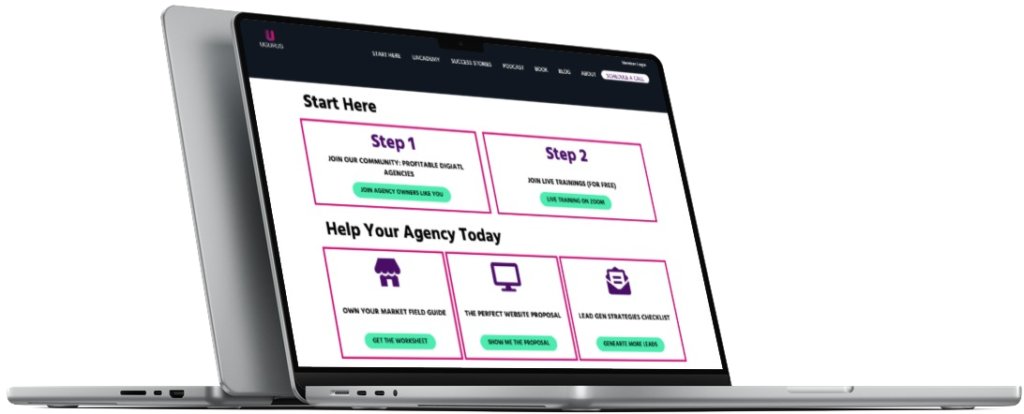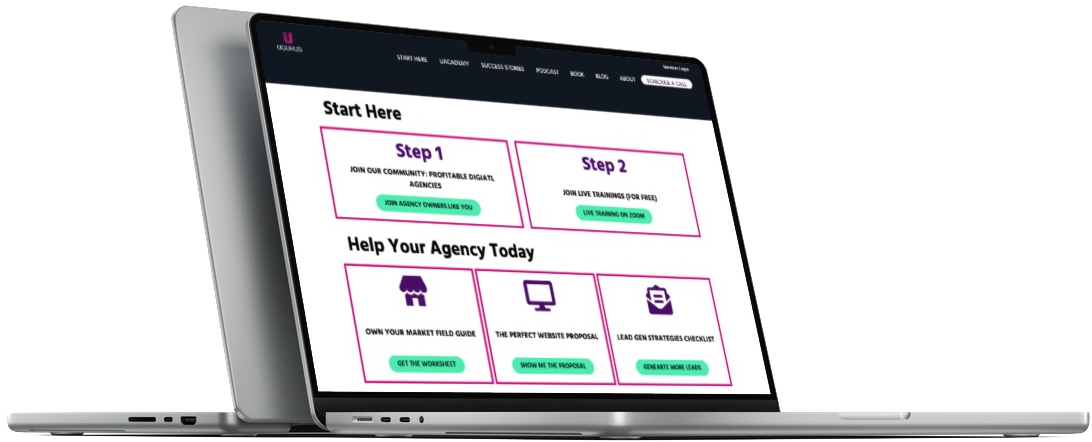When was the last time you had a problem in your business that you needed to solve? This morning, maybe? What did you do to solve it? Perhaps you searched Google for those answers and discovered a combination of organic webpage results and ads. Or paid more attention than you usually would to an ad on Facebook (an ad that targeted to you, of course) that talked about a problem you know too well.
In these situations, the same thing happens. Your brain starts to consume the content with a single goal—relieving the pain or discomfort that it’s experiencing.
Some of the messages you see will attract you to them. You’ll have a hunch that the person doing the talking might be able to help. And some you’ll instantly feel “aren’t for you.”
Here’s the question: what attracts people to one message and not another? Can we reverse-engineer this attraction principle and leverage it for our own businesses—in a repeatable and proven manner?
Yes, you can. When you master the third A of the 5-A Framework, you’ll be able to attract customers to you whenever you want to.
Attracting Customers
No matter the medium, the awareness activities you undertake must be strategically and tactically created with one purpose only: to attract ideal customers to your business. If you fail to do this, the time you spend on awareness will go to waste.
After all, you’re not doing this for fun. There’s only one reason to create any kind of awareness activity: to introduce your unique abilities to as much of your audience as you can.
Now, the bad news: publishing a piece of content—on a blog, a stage, or another platform—doesn’t automatically guarantee that you’ll get any results. (To keep things simple, I’m going to talk about content from now on. Because, in one sense, any awareness activity you could focus on is content.)
But all the other businesses and publishers in the world are competing with you for your prospect’s attention. With all of the information out there, humans are starving for great content. But most of what’s out there is what I call throwaway content. People read, watch, or listen to it and then “throw it away” by forgetting about it instantly. But you have an opportunity to cut through the noise—to be a lighthouse in the storm—by using your content to speak directly to the problems facing your market. You’ll show you can solve those problems—by telling stories.
Storytelling
Storytelling and the art of narrative are baked into our cognitive structure. You can tell a customer about a feeling they’re having right now, then paint a mental picture of a fictional future in which they don’t have that feeling. Once they’ve eaten up every word of your story, you can invite them to work with you to make this vision a reality.
If your message resonates with a reader—and they believe you are a credible source of information—they will be attracted to you without even their conscious control. They will click, read, click, read, and click some more until they can get your solution to the tension that they’re feeling.
That means it’s your job to share with the world the amazing things you can do to solve their problems. But without telling stories to tap into their deepest psyche, no one will ever show up at your door for your help. You owe it to them—and yourself—to create content that attracts.
Attract Leads with “Attracting” Content
To create lasting material that is the opposite of throwaway content, pretend you’re fishing.
There are a few ingredients to content that attracts similar to the different parts of your fishing setup. Just like you can change your lure or line to make what you’re doing more attractive to fish, you can experiment with these ingredients to make your content irresistible to your ideal customers. The first of these ingredients is Problems.
Problems
Your audience has problems, and those problems are costing them much money, time, and energy. You want to tell them you’re the solution to those problems—that hiring you is easier and faster than solving those problems themselves.
In business, there are really only four main kinds of problems:
- Money
- Time
- People
- Passion
But you can’t address them directly. You can’t go to your audience and say, “You’re not making enough money! Hire me!”
Compare “You’re not making enough money” to this statement: “You have a cash flow crisis—not because you don’t have work but because your clients are failing to do what they need to on time, which is pushing your project schedule. That means you can’t get paid because your contract is based on deliverables, not dates. If this is something you’re struggling with, schedule a strategy session, and we’ll map out how to change your billing terms.”
I’m still talking there about a money problem, but I’m now discussing it in a way that people in my market can relate to. I’m “getting inside their head.”
Here’s a look at the same issue through the other lenses:
Time: “Creating invoices and chasing down clients is not a high-value task. Your time is more valuable than this. Consider delegating these ten-dollar-an-hour tasks to assistants so you can focus on growing your business!”
People: “Finding the right people to take tasks off your plate can be a headache. It requires a lot of trust to let go of creating and sending invoices—collecting payments from clients—but without this person, you’ll be stuck doing this monotonous admin task for the rest of your career, and that’s no fun.”
Passion: “I doubt sending invoices is your unique area of genius. Not only that, but it probably drains you. You might even needlessly delay doing this part of your business because it’s such a pain, which of course, causes cash flow problems and takes you away from doing what you’re meant to be focusing on: growing your business!”
By unpacking the same core issue, but through different lenses of money, time, people, and passion, I can zero in on highly relevant problems for my audience to sink their teeth into.
Speaking to Customer Problems
If I were to let my imagination run wild, I could come up with a dozen or more problems and pain points just from this one issue, like:
- Lack of cash flow is keeping you from paying yourself.
- Cash flow stress keeps you up at night.
- Your clients have all the power and control over your income.
- You’re starting to ask why you put up with all of this.
I understand these issues as an expert and authority within the market I serve. And talking about them in the content, I create attracts ideal customers to my business. When you know your client’s problem better than they do, that positions you as an expert.

Learn more about applying the 5-A Framework to your business in my new book, Get Rich in the Deep End, order here.
Identify Problem. Describe Problem. Repeat.
You might worry you’ll end up talking about the same problems over and over again, and that’s okay. There’s a lot of noise in the marketplace, and your customer probably won’t hear you the first time—so you need to keep at it. But you certainly don’t have to repeat yourself verbatim. The trick is to do it from a hundred different angles. It will seem fresh and new to your audience, but it’s not. You’re just framing the material in new ways to help them hear your message.
How to Find Customer Problems
To come up with all those different angles, I start with actual problems people have told me about. I think of recent conversations I’ve had and refer to emails I’ve received from customers or prospects. The best way is to speak directly to people in my market through informal conversations, formal interviews, or surveys.
There’s still much to discuss about attracting new customers, the third A in the 5-A Framework. In my next blog, we’ll discuss two more ingredients to content that attracts: Language and Voice. Be sure to join me next time. In the meantime, if you feel like you are ready to take the next step in owning your market, then it’s time to set up a free strategy session. Simply apply for it here.
GET YOUR FREE AGENCY ACCELERATOR PACKAGE







